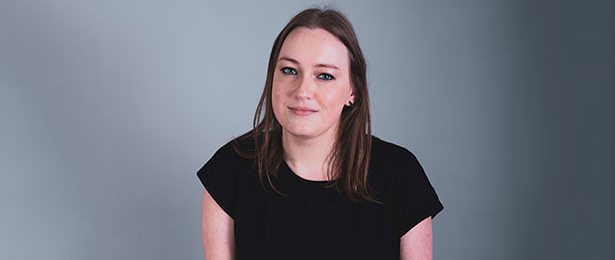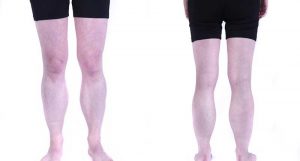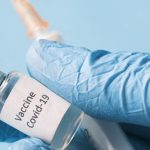
Living with Lipodystrophy | Becky Smith
Posted Sunday 14th Aug 2022 Patient Stories
Today we speak with Becky, who has Familial Partial Lipodystrophy. Becky shares her experience of how she was diagnosed and what it is like living with Lipodystrophy.
Can you tell us a bit about you?
My name is Becky. I’m 33 years old, originally from west London but will be relocating to North Yorkshire soon. I am a web developer working full-time for a pet supplement company. I like to travel, do crafts, play video games, listen to music and spend time with my family and friends.

How were you diagnosed with Lipodystrophy?
Unbeknown to my family, I was born with Familial Partial Lipodystrophy type 3. As a child, I appeared no different from my friends or family that did not have Lipodystrophy. The only notable occurrence in my childhood was the somewhat regular and crippling cramps I would get in my calf muscles. After the pain from the cramping subsided I would walk with a limp for an hour or so until my muscle had stretched back out. I also went through a period where I would faint, particularly in the hot weather.
Noticeable differences started to occur in my teenage years. One of the first things everyone noticed was that I had developed muscular calves and broad shoulders. This was also the first time I can recall regularly experiencing fatigue. I would often take afternoon naps to see myself through the day. When I was 16, at a routine doctor’s appointment, it was discovered that I had high blood pressure. However, this was wrongly put down to ‘white coat hypertension’ (nervousness at the doctors) at the time.
Fast forward to my early twenties, and the fatigue had really set in. I had an office job, and I would often struggle with the feeling of extreme tiredness whilst sitting at my desk. I had to get up and walk around or go and splash my face with cold water to get by. After suffering with this for a couple of years, I decided to go to my GP. They carried out some tests and told me I was prediabetic. I remember feeling so confused as to why I was prediabetic at such a young age, especially when I wasn’t overweight. My father, who I now know had Lipodystrophy, had diabetes and had passed away when I was 18. As I had such negative connotations of diabetes, I struggled to accept this diagnosis and ignored it. Unfortunately, this meant I did not change anything in my lifestyle.
As the years went on, and I was in my late twenties, I felt worse than ever. At 27 years old, I was finally put on medication for my blood pressure as it was discovered to be severely high at a hospital visit. I could tell something was going wrong in my body as I felt so unwell. It was hard to articulate this feeling to anyone as what I felt was invisible. Until it wasn’t.
A year later, at 28 years old, I went to the doctors as I had these horrible spots appear over my body. My GP had never seen anything like it and assumed it was folliculitis and gave me antibiotics. Just to be cautious, my GP also took routine blood work. That evening, I got a phone call from a healthcare professional who was assessing my blood at a lab. He told me I needed to go to hospital as soon as possible as I had extremely high triglycerides and I was at high risk of pancreatitis. Scared and confused, I went to the hospital and this was the beginning of my diagnosis with Lipodystrophy.

Image of the Eruptive Xanthomas Becky experienced
After a four day stay at the hospital, I was discharged and put on a large amount of medication. I had been diagnosed with diabetes, high triglycerides, high cholesterol and fatty liver. The mysterious spots I had developed were called eruptive xanthomas. They occurred as a result of my high triglycerides and were filled with the fatty substances that were circulating in my blood. I was somehow fortunate to have not developed pancreatitis despite my triglycerides being 67mmol/l at its highest (it should be below 1.7mmol/l).
As it was unusual for someone of my age and weight to have had such extreme health issues and diabetes, I was referred to a specialist diabetic clinic who assesses patients with rare types of diabetes. Luckily, the health care professionals who worked at this clinic were familiar with Lipodystrophy. After a body assessment, they suspected I had Lipodystrophy and sent off for genetic testing. When the results came back, I discovered I had Familial Partial Lipodystrophy type 3 which I inherited from one of my parents. We immediately suspected my dad as he had diabetes, high blood pressure, high cholesterol and sadly passed away after experiencing several strokes and heart attacks.
How did being diagnosed with Lipodystrophy make you feel?
I remember being at work and receiving a phone call from one of the consultants from the specialist diabetic clinic. She told me my results from the genetic testing showed I had Lipodystrophy and explained a bit about the condition and the type I have. Immediately after getting off the phone, I searched Lipodystrophy online and was gutted to learn that there is no cure and this would stay with me forever.
I found it hard to accept the diagnosis. I felt alienated and different from everyone around me (who didn’t have a rare condition). I started thinking of what this could mean for me and my future. I thought of my dad, and how it was likely he had Lipodystrophy. I thought of how much he suffered without knowing why. I had witnessed my dad have strokes and heart attacks, and I became fearful of this happening to me.
Over time, this led to feelings of depersonalisation (detaching myself from my body in my mind), severe health anxiety where I would convince myself that a headache would result in a stroke, and panic attacks.
What impact does Lipodystrophy have on you physically, emotionally and mentally?
Physically I get a lot of aches and pains. I get muscle fatigue and pains very quickly when doing any form of physical work. I still get cramps in my calves, but not as frequently as I did when I was a child.
I would say Lipodystrophy has a huge impact on my emotional and mental state. I know that in order to look after myself the best I can, I should follow a very strict low fat and reduced carbohydrate diet and exercise as much as I can. I go through periods of acceptance and hope where I try to ensure I manage my strict dietary needs, find time to exercise and perform well at my job without letting the fatigue hinder me. Unfortunately, the burden of this disease often gets on top of me. When I let one thing slide due to fatigue, such as my diet or exercise, everything else tends to go wrong. For example, if my day job has been hectic, I can experience more severe fatigue which then makes it hard to plan my diet and ensure I am not having too many grams of fat or carbs per day. I’ll then resort to eating quicker and accessible meals that aren’t as good for me. This then causes my health to spiral and I start to feel unwell. For example, my blood sugars, cholesterol and triglycerides increase. In these moments, where I’ve let one thing slip, I feel resentful towards myself for letting this happen. The voice in my head becomes very critical and I fall into a low mood where everything becomes difficult. I put all of my leftover energy into ensuring that I am still performing well at work but this means I have no energy left for things like socialising with friends, and managing my health. This causes my self esteem to plummet and it can be challenging to break out of this cycle.

Becky’s calves
I also go through periods where I struggle with my appearance as a result of Lipodystrophy. For example, I will never wear a knee length skirt without boots as I often hear horrible comments being made about my legs. I also get self conscious about the fat around my face and chin, which becomes more obvious when I’ve let my diet slip for a while and put on weight. This can make me feel uncomfortable at social events where I know I’ll have my photograph taken.
How do you manage all of your conditions? What are your biggest challenges?
When I follow a strict low fat and reduced carbohydrate diet, all of my conditions (blood pressure, cholesterol/triglycerides, fatty liver disease and diabetes) tend to be very well controlled or normalised. For example, I was able to bring my diabetes down to normal levels and come off of insulin. At one point, I had also reversed my fatty liver but unfortunately, where I have struggled to maintain this lifestyle, my fatty liver has returned.
As I mentioned before, my biggest challenge is maintaining such a strict lifestyle whilst working a full-time job and living through the emotional and mental pain the burden of Lipodystrophy puts you through. The management of this disease can often feel like a job in itself.
When I do achieve a good balance with managing my diet, lifestyle and work, I feel in control of Lipodystrophy which helps me to feel hopeful and positive for the future.
For anyone newly diagnosed with Lipodystrophy, what advice would you give them?
I would say give yourself the time you need to accept and come to terms with your diagnosis. It is perfectly normal and understandable to feel scared, upset or any negative feelings you may be experiencing. Push for psychological support, this will help with coming to terms with your diagnosis. Where possible, surround yourself with positive and supportive friends and family. It is important to talk about how you are feeling and what you are going through.
I would also recommend learning about Lipodystrophy and focus on what can help you feel in control. This could be working towards getting any associated conditions under control by changing your lifestyle and diet, as well as taking your medication as prescribed. I found it very empowering when I managed to get my conditions under control, it also gave me a lot of hope for the future. Working towards goals like this (or when you achieve it) massively helps with how you cope and feel on a day to day basis. Lipodystrophy does not have to define you.
Created by: Rebecca Sanders
Blood pressure Cholesterol Fatty liver Patient story Triglycerides







